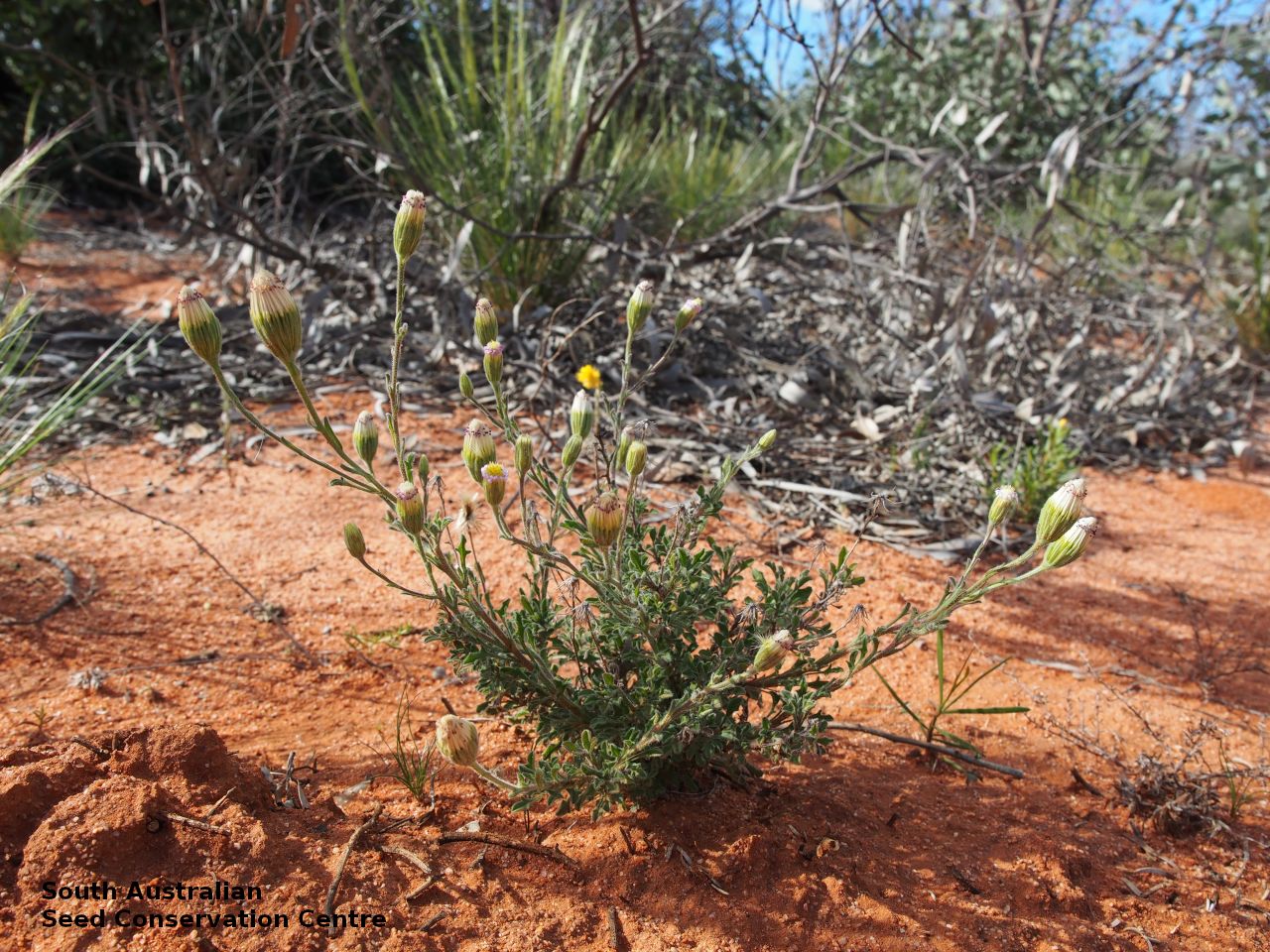
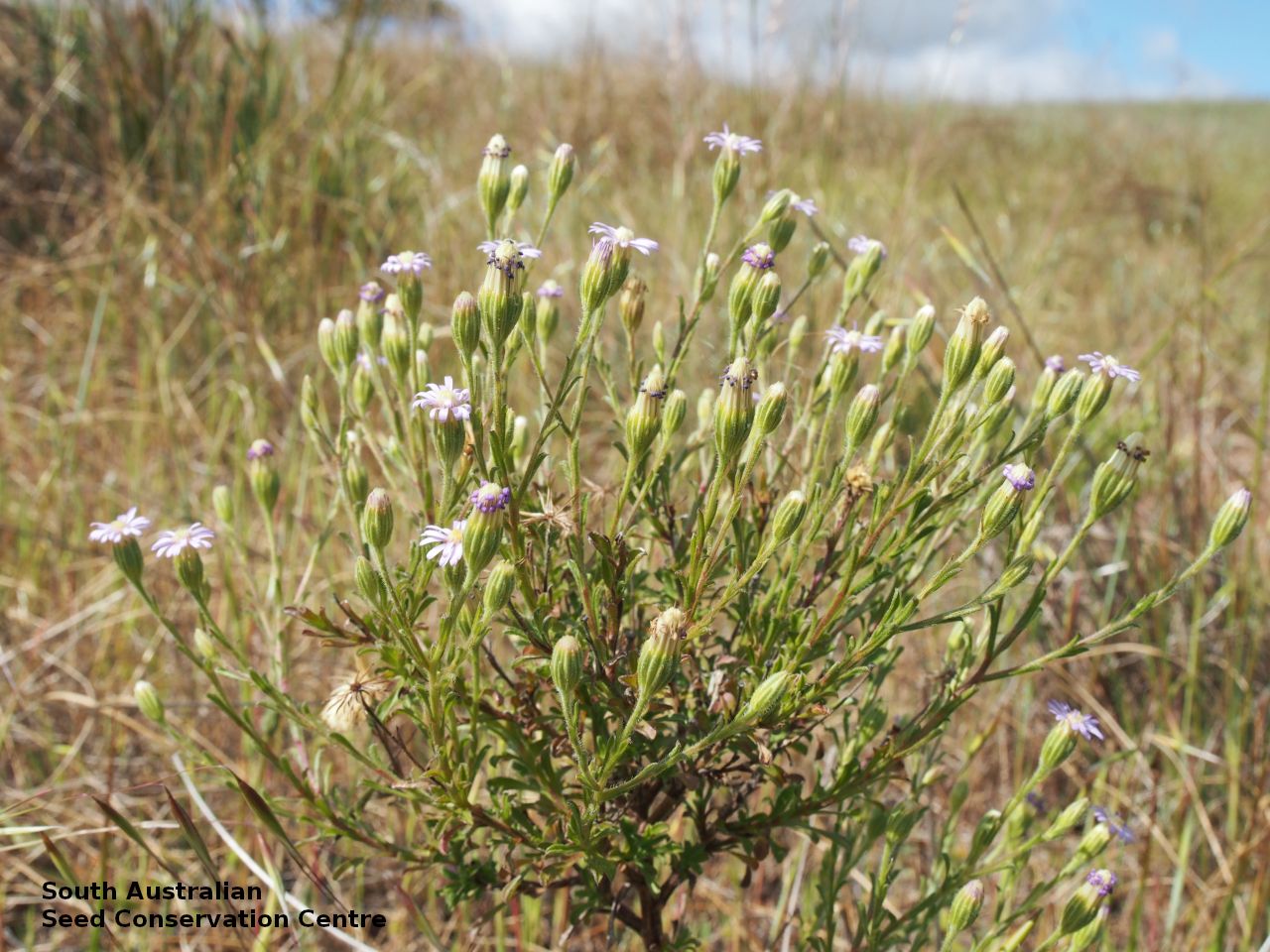
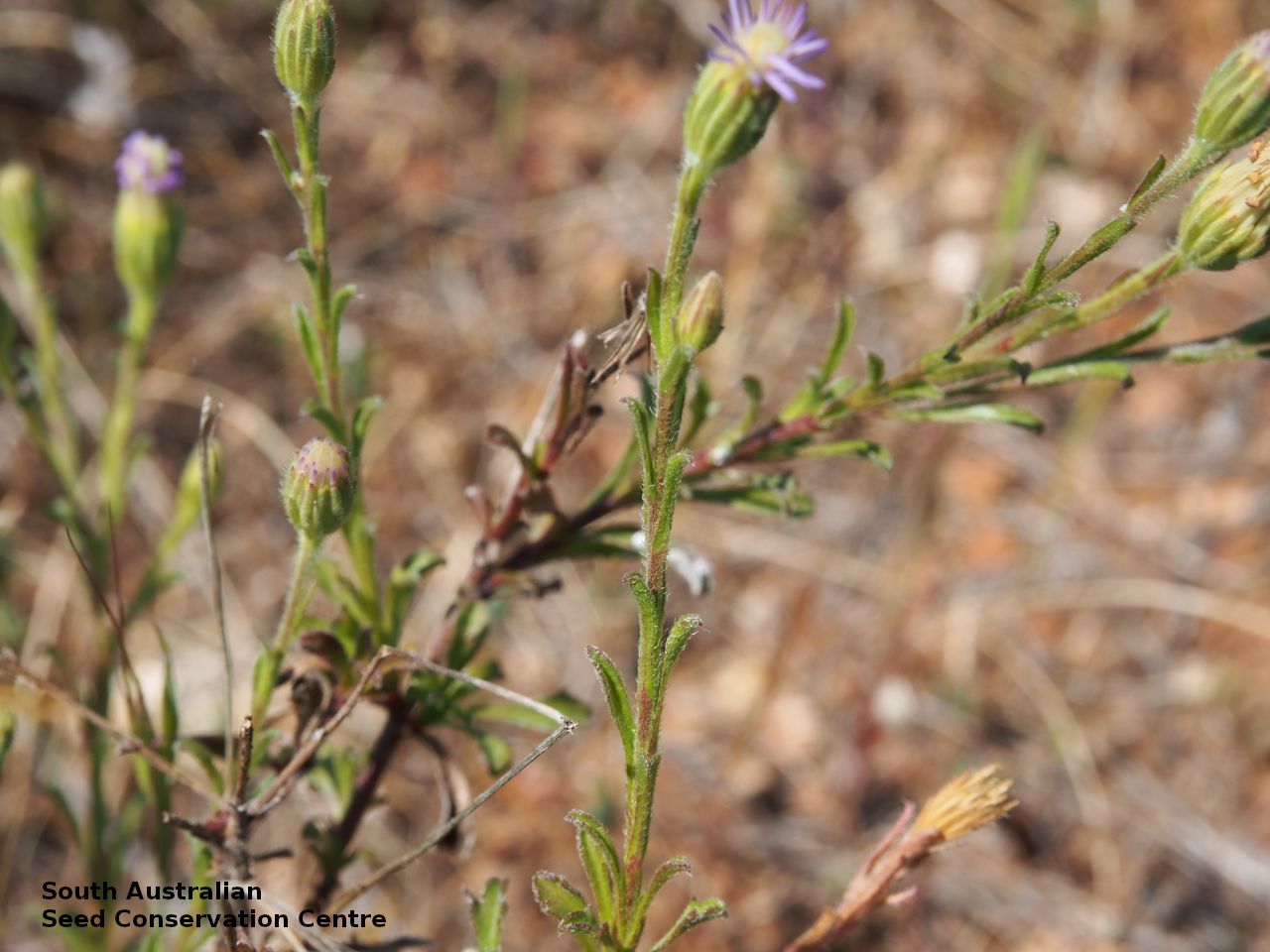
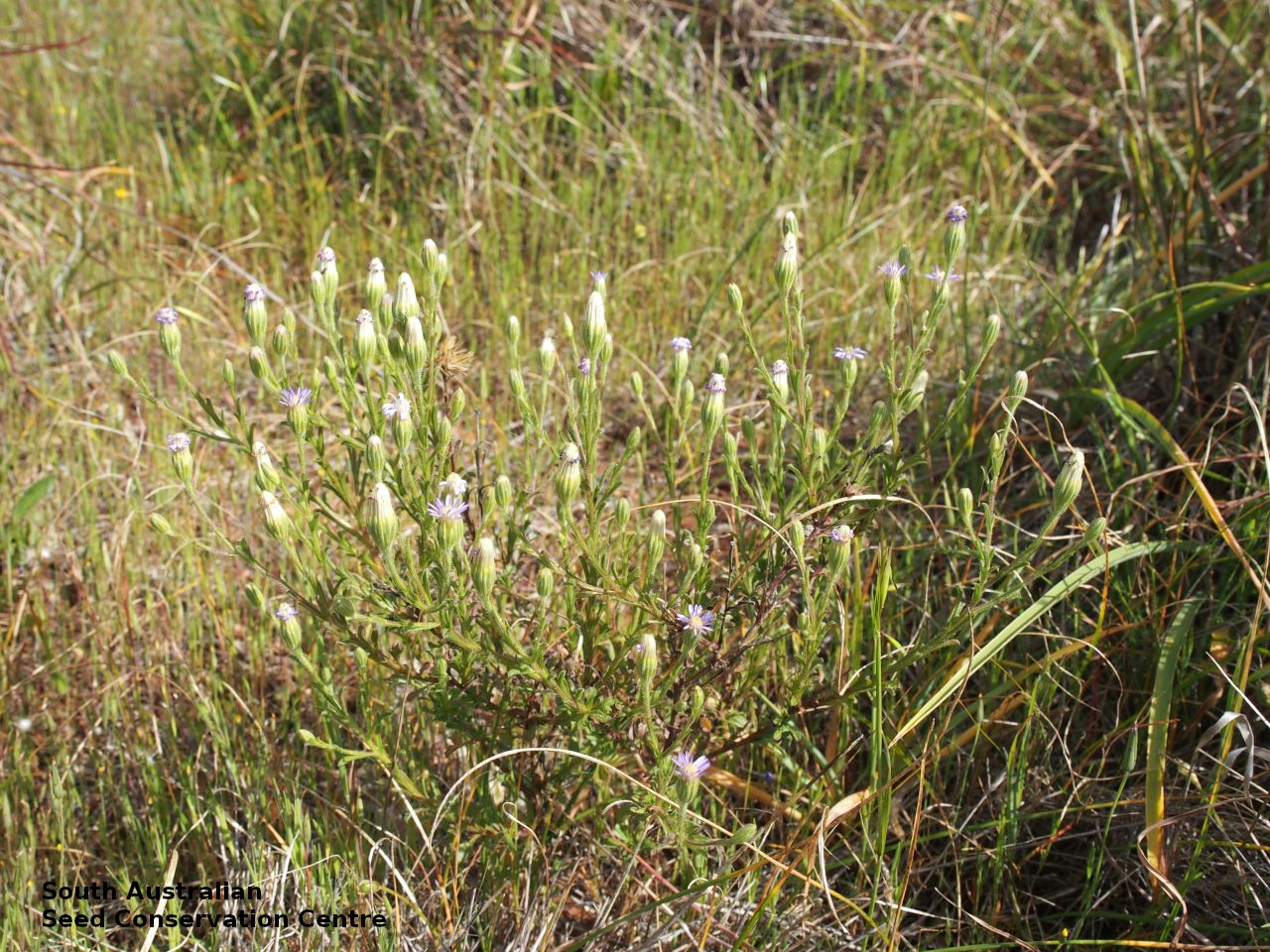
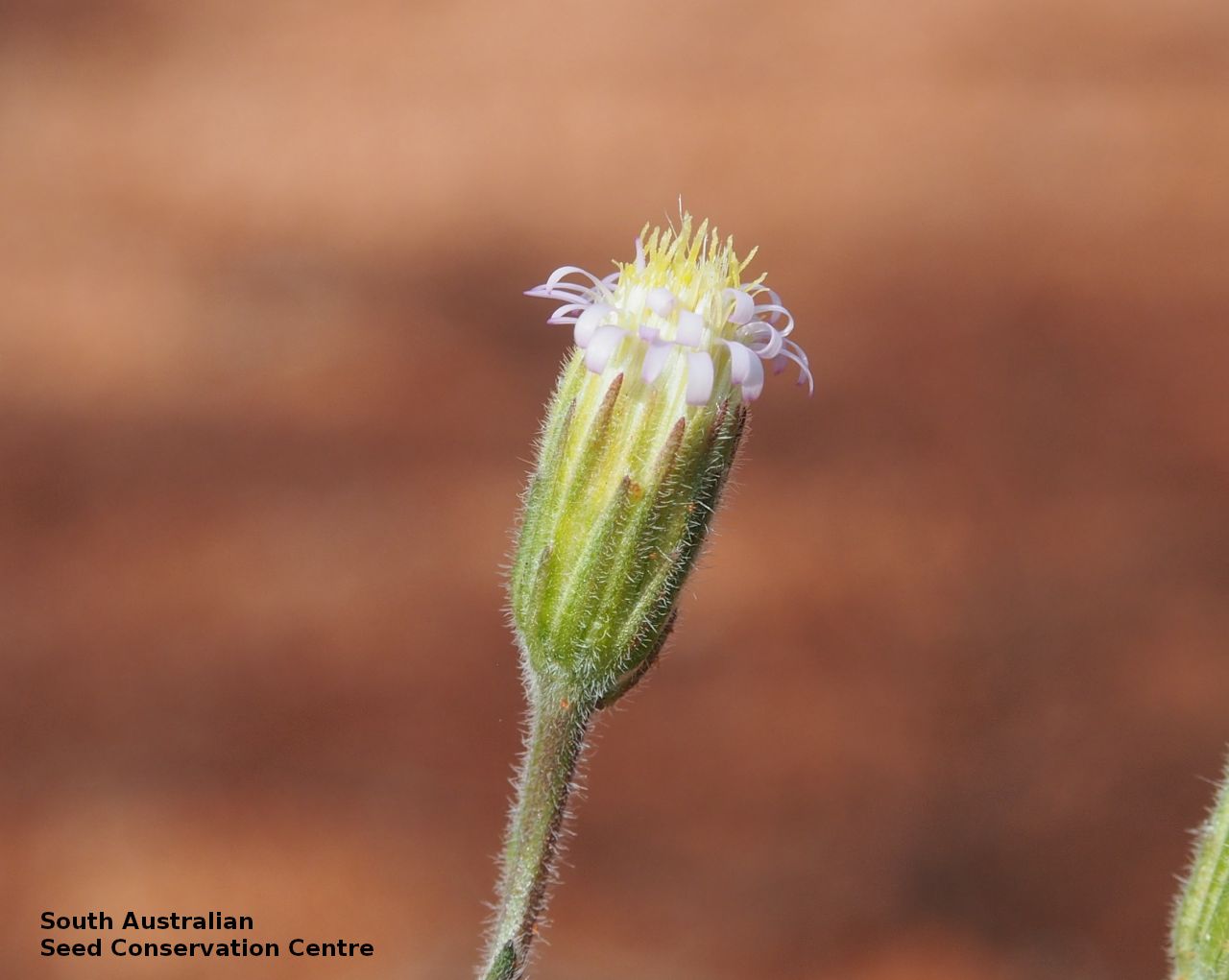
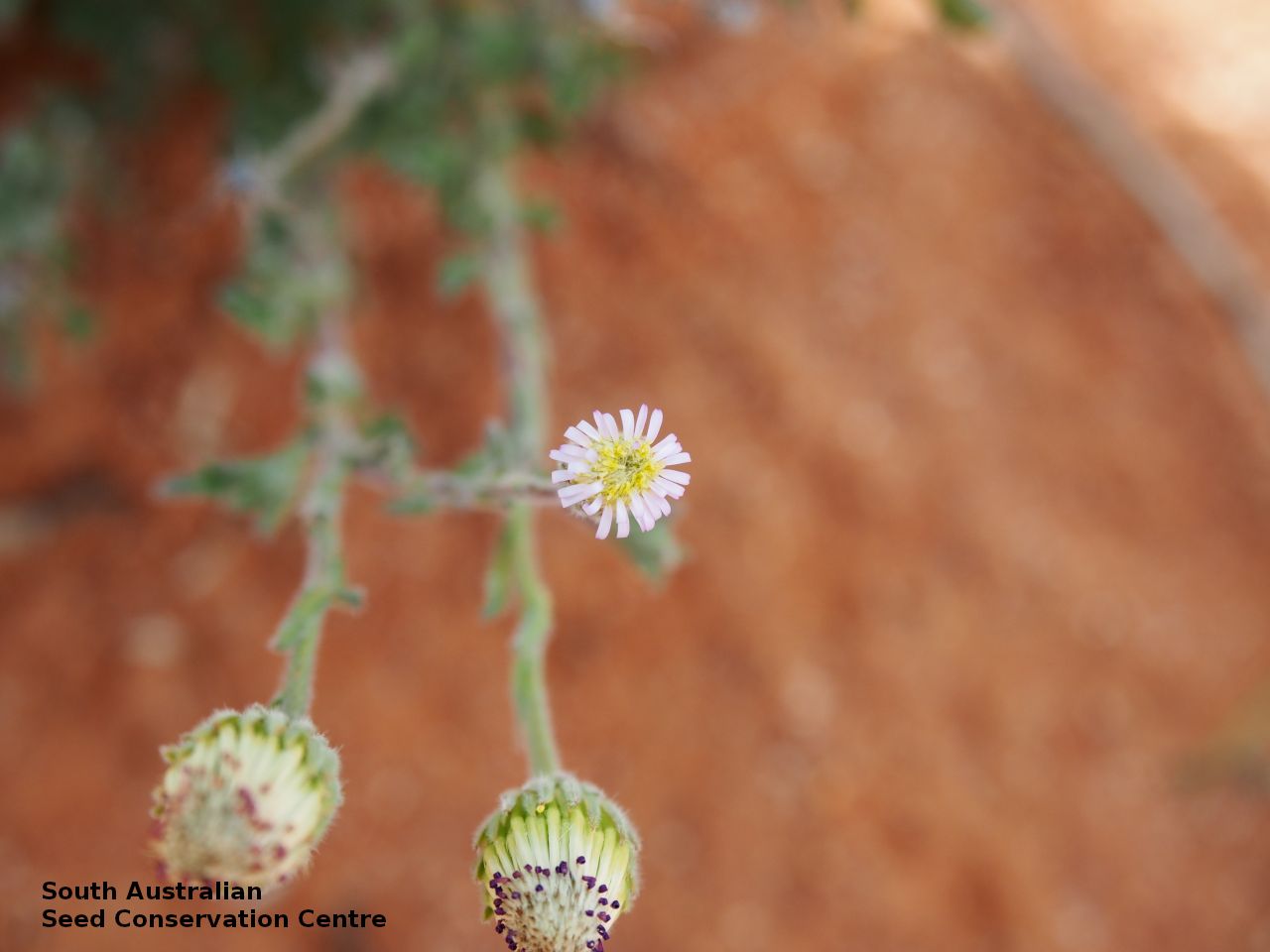
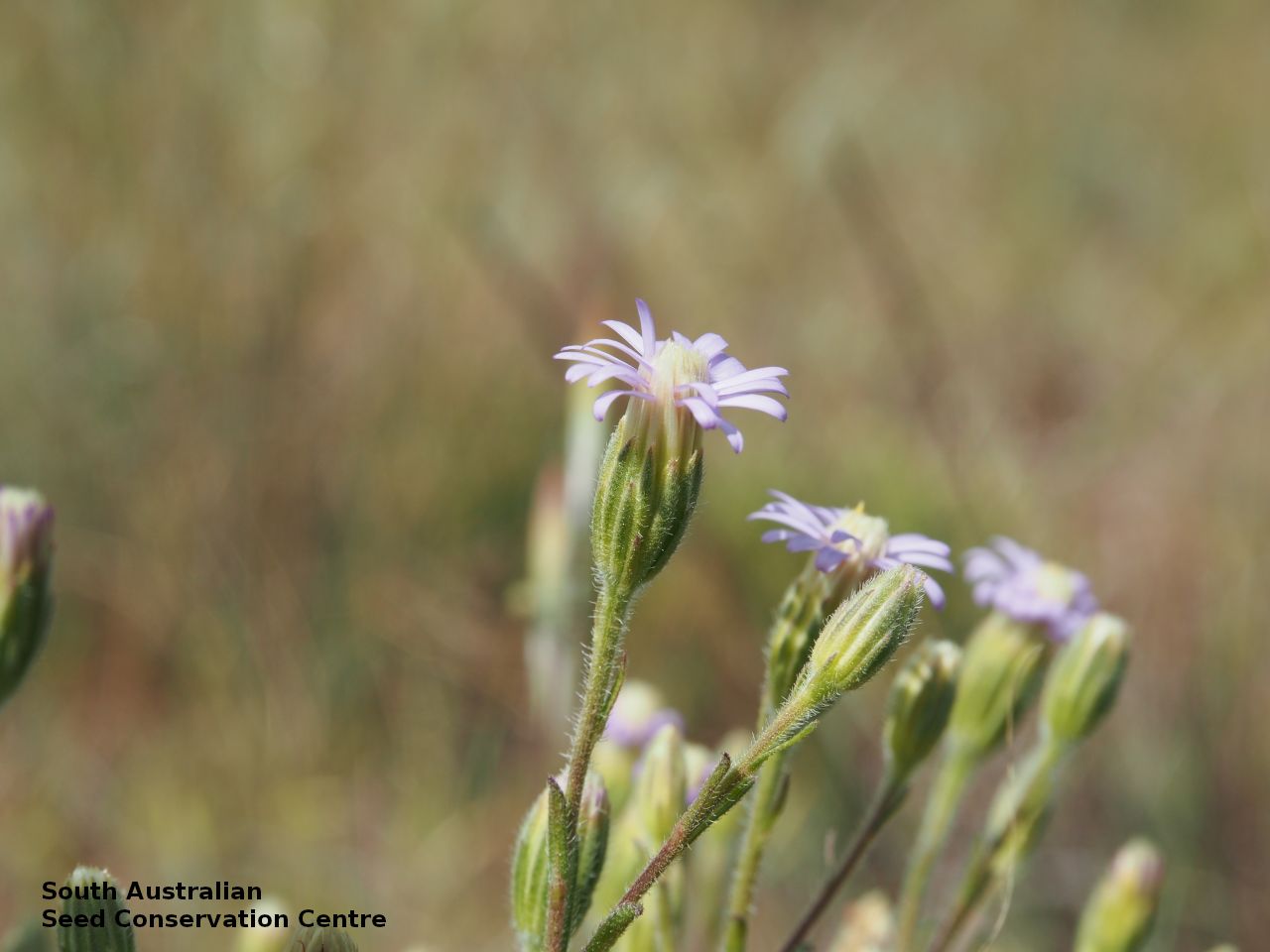
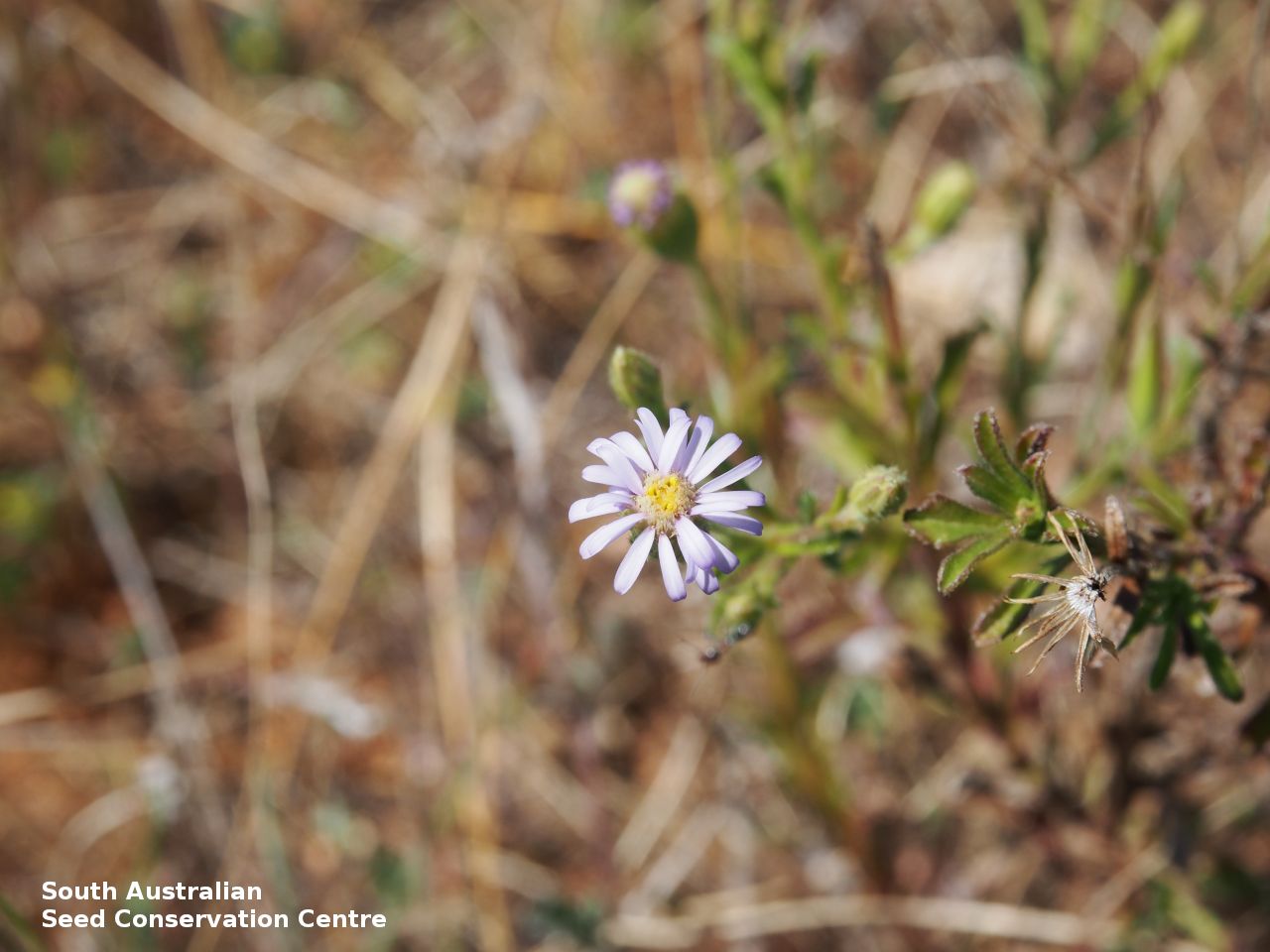
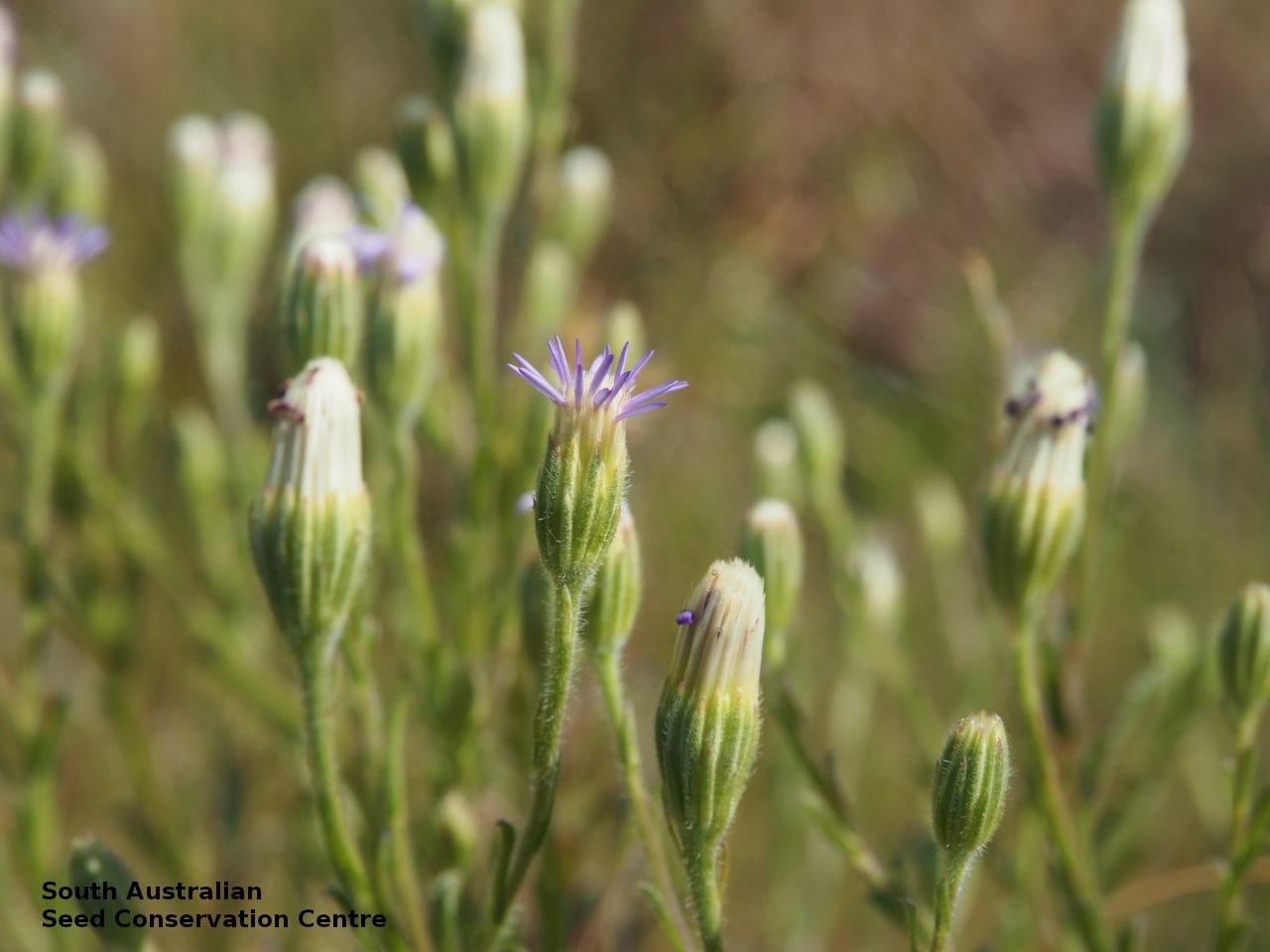
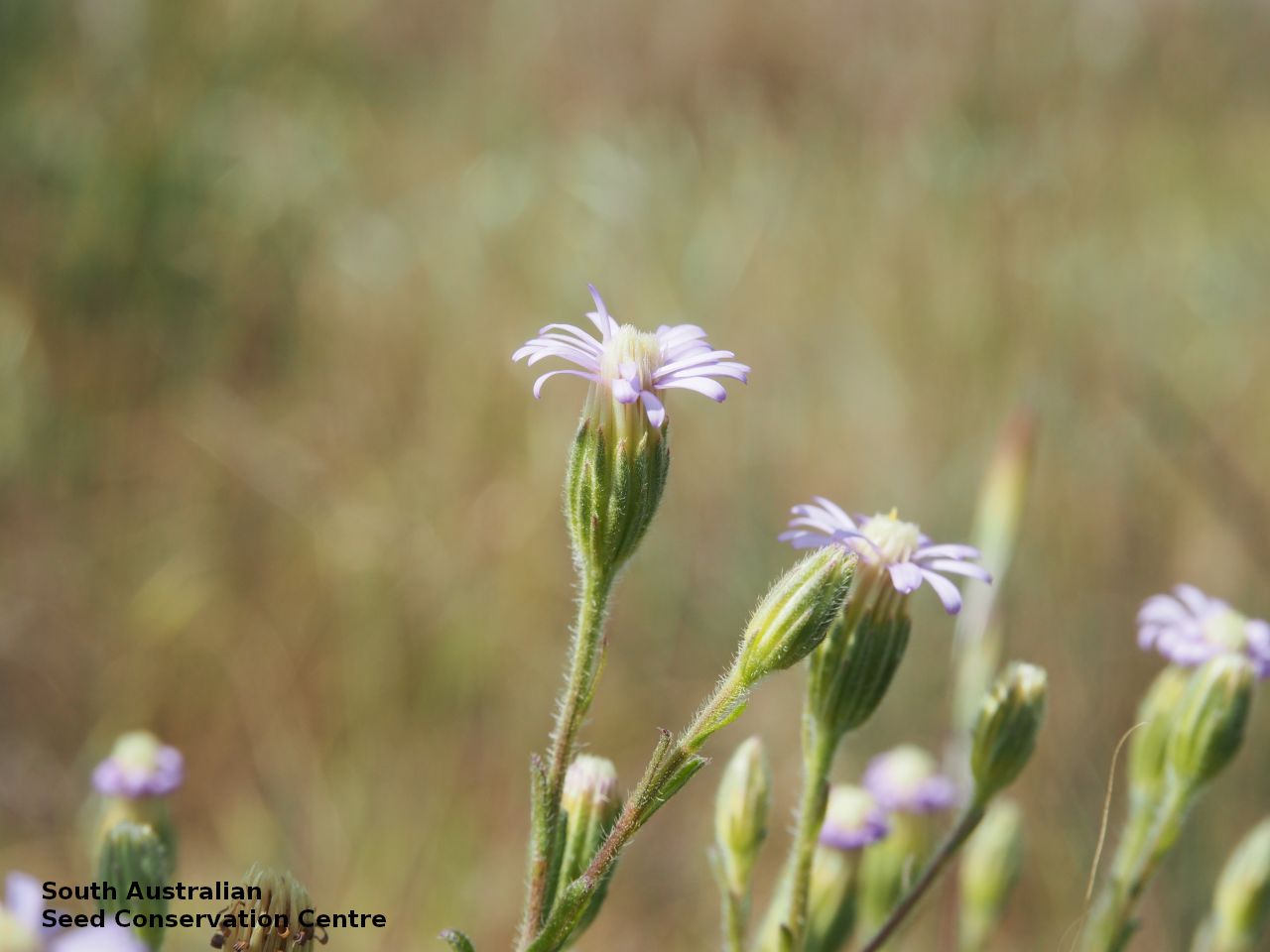
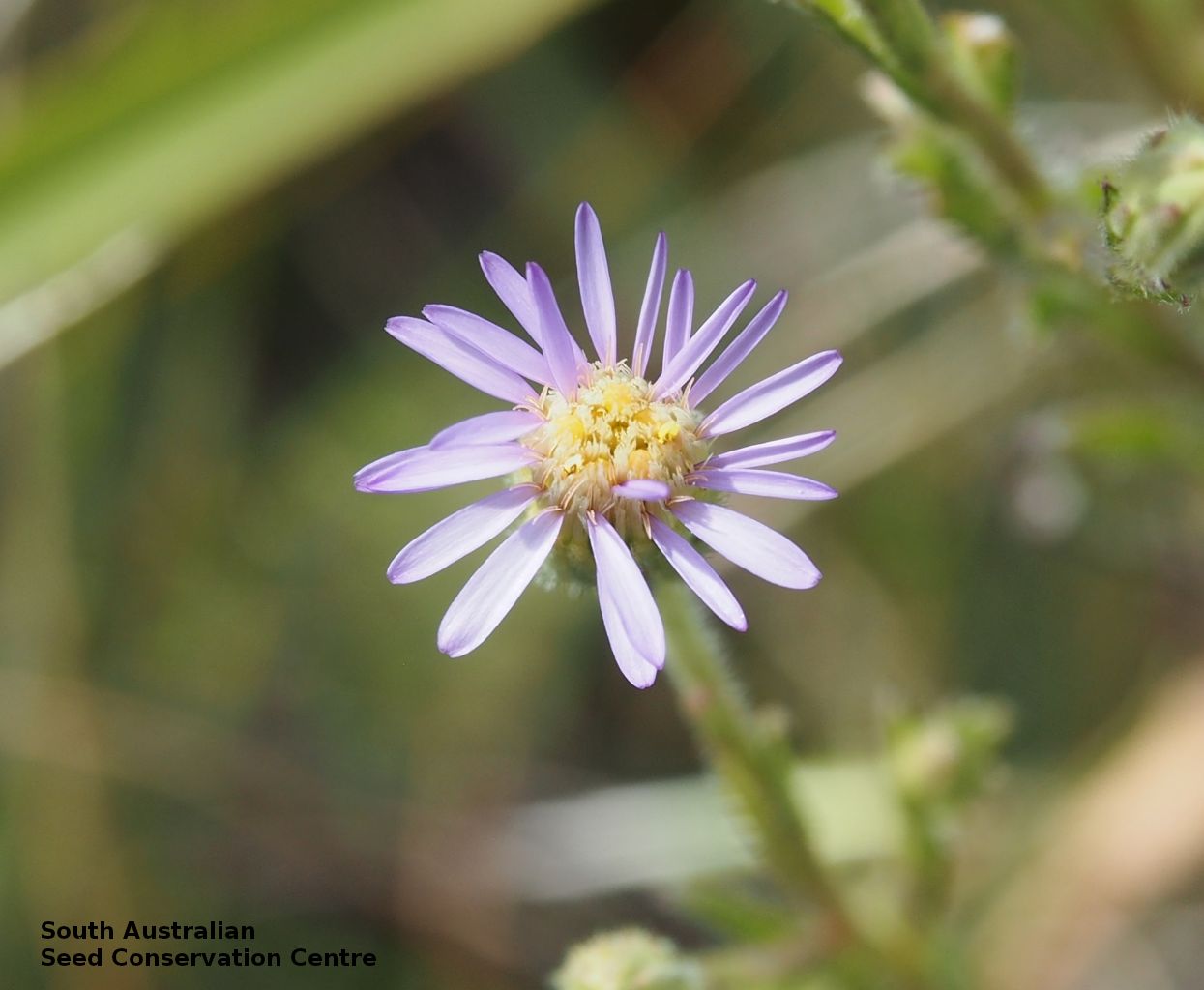
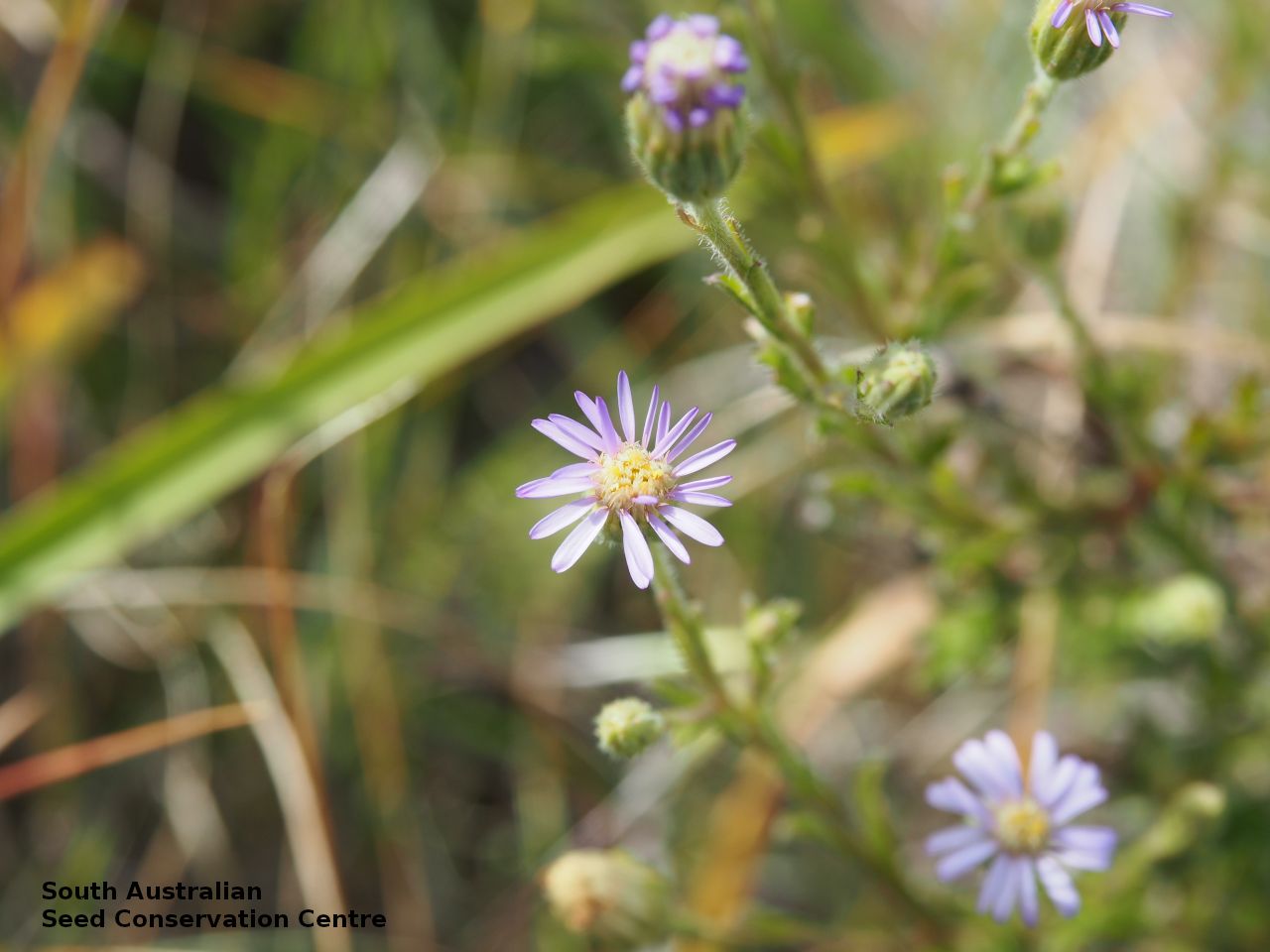
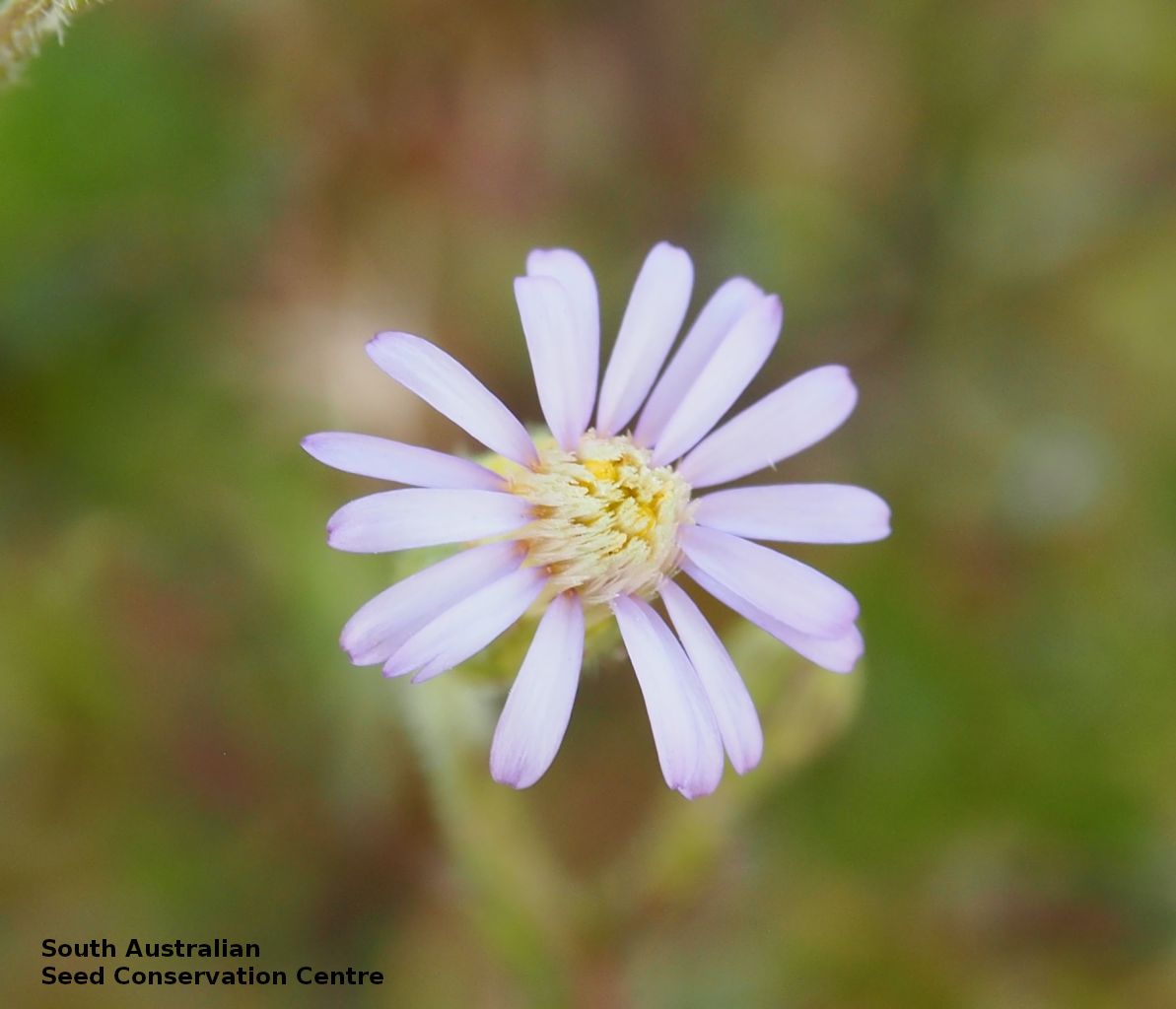
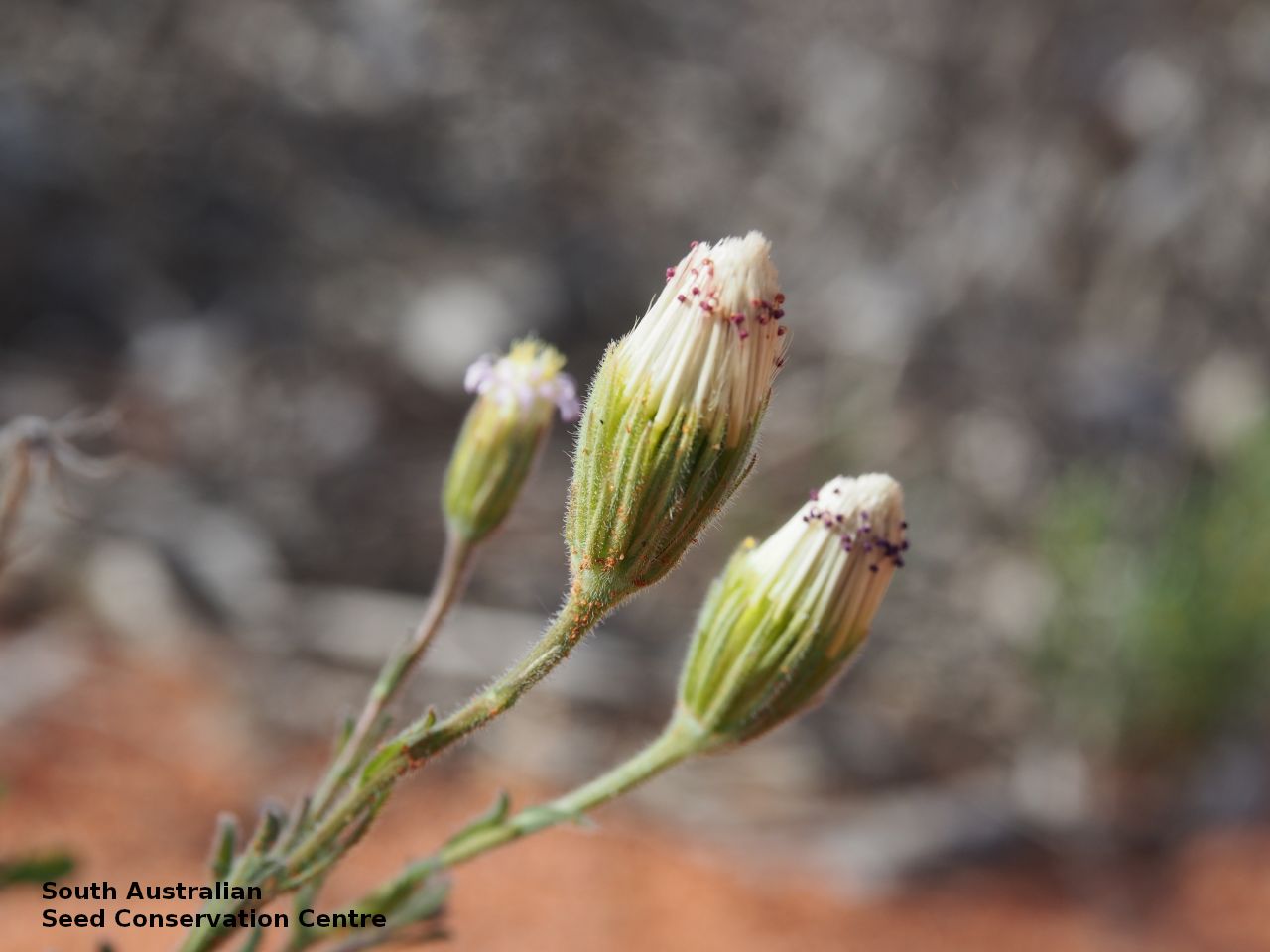
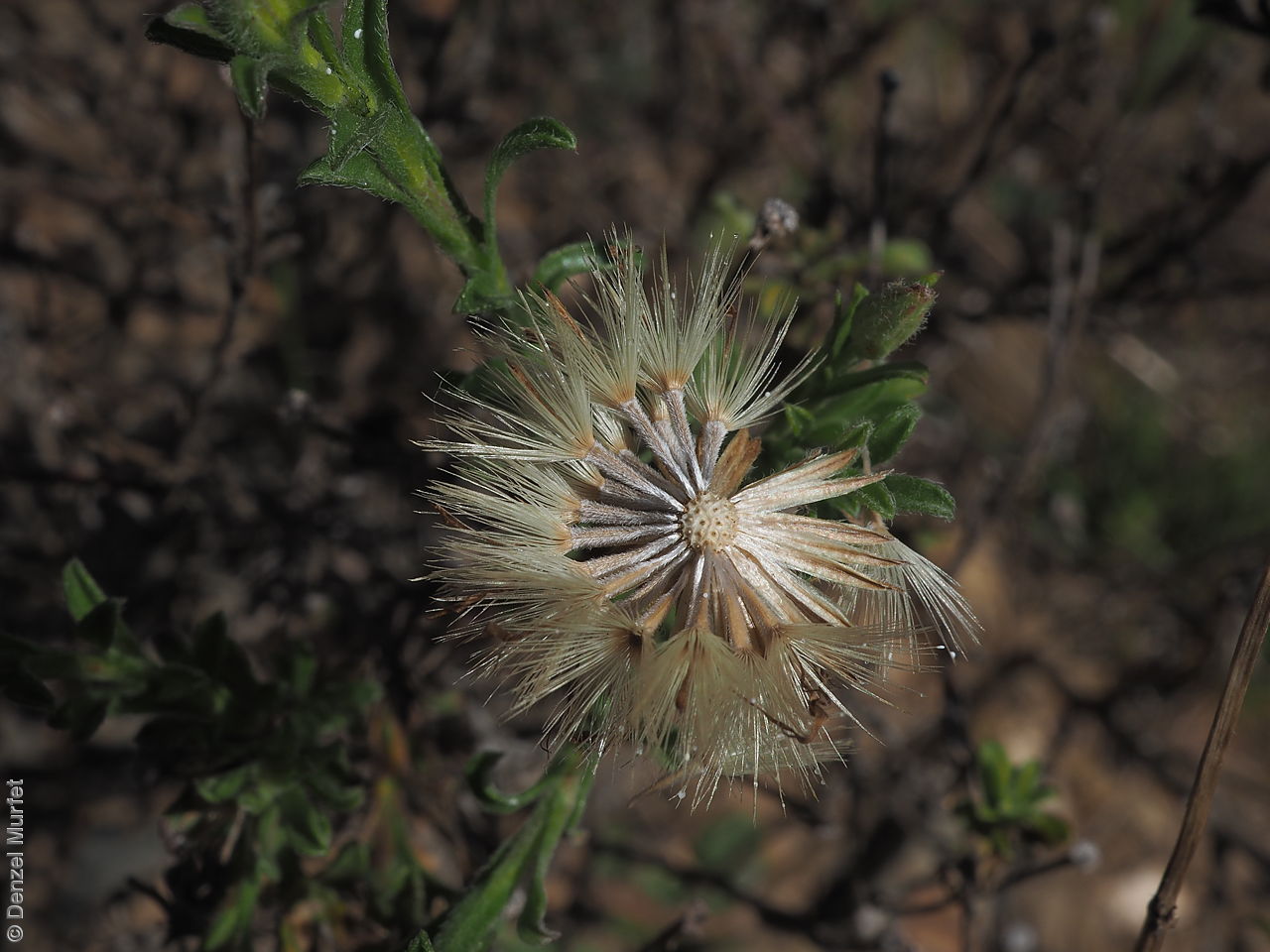
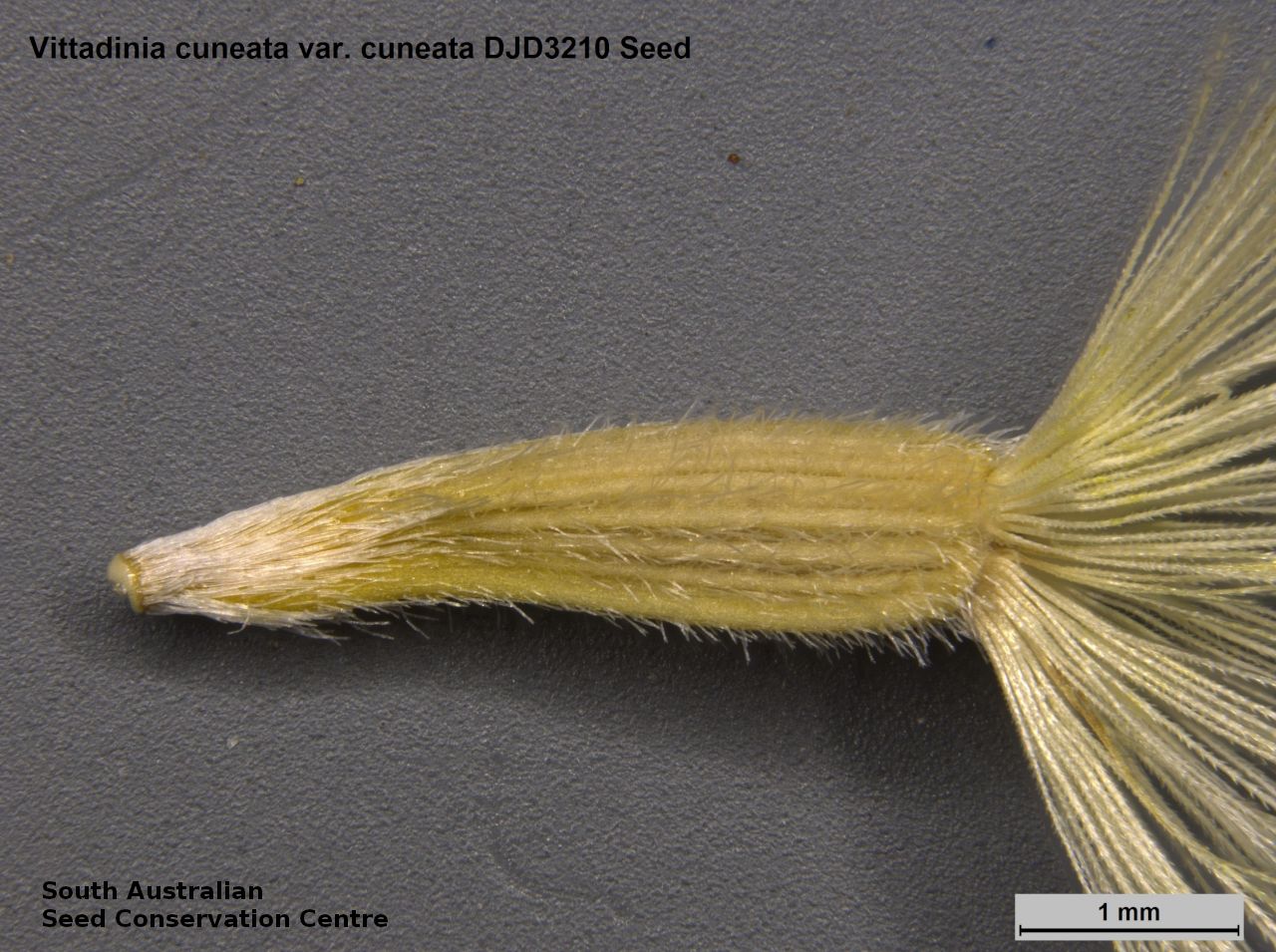
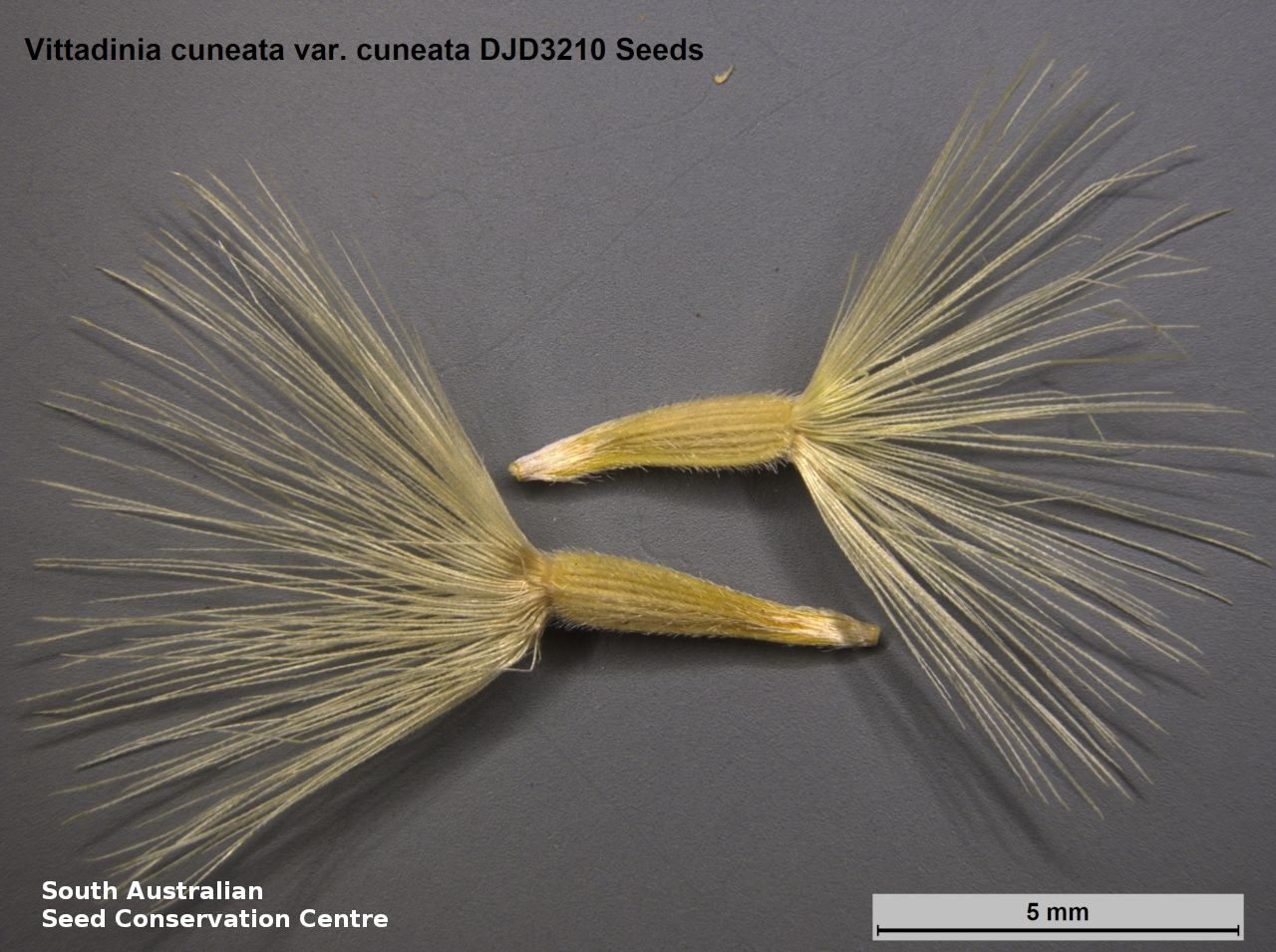

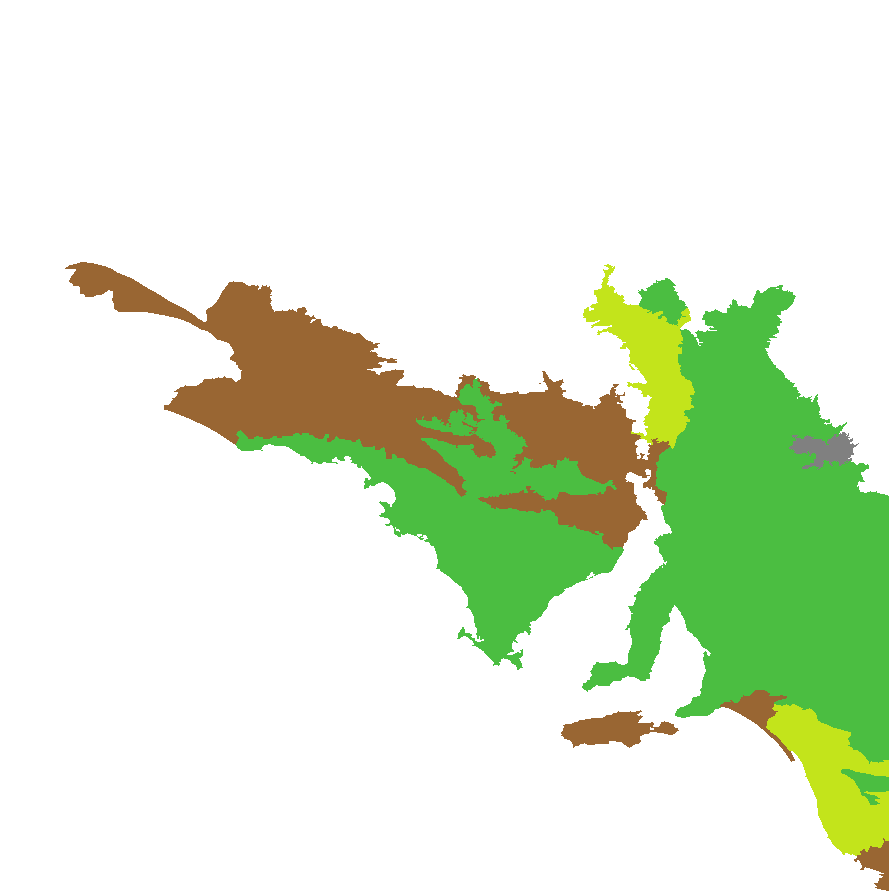
Botanical art
Prior names
Vittadinia cuneata f. cuneata
Common names
Fuzzy New Holland Daisy
Fuzzweed
Etymology
Vittadinia named after Carlo Vittadini (1800-1865}, an Italian doctor and mycologist, author of several important works on Italian mushroom species. Cuneata from the Latin 'cuneum' meaning wedge; referring to the wedge-shaped leaves.
Distribution and status
Found in the south-eastern part of South Australia, from the Flinders Ranges to the lower South-east, growing in a variety of soil types in woodland, mallee and cleared land. Also found in all states except for the Northern Territory. Native. Common in South Australia. Uncommon in Western Australia and Tasmania. Common in the other states.
Herbarium regions: Flinders Ranges, Eastern, Eyre Peninsula, Northern Lofty, Murray, Yorke Peninsula, Southern Lofty, Kangaroo Island, South Eastern, Green Adelaide
NRM regions: Adelaide and Mount Lofty Ranges, Eyre Peninsula, Kangaroo Island, Northern and Yorke, South Australian Arid Lands, South Australian Murray-Darling Basin, South East
AVH map: SA distribution map (external link)
Plant description
Woody short lived perennial herb to 40 cm high with rigidly erect stems. Leaves subconduplicate, narrow-cuneate to spathulate or oblanceolate, with attenuate bases, to 2.5 cm long and 5 mm wide, entire or with 2 small lateral lobes. Ray-florets pale-blue to mauve. Flowering between October and March. This subspecies differ from the other two subspecies found in South Australia by having hairs that are strigose on leaves, strigose to spreading on the stems, compared to V. cuneata spp. morrisii with hairs on leaves and stems fine, curled, with thread-like tips, young growth and leaf-axils often almost cottony (but not obscuring the surface) and V. cuneata ssp. murrayensis with hairs that are short and scabrid, plant usually viscid. Fruits are fluffy creamy daisy head. Seeds are yellow semi-flat long ovoid seed to 4 mm long and 1 mm wide, surface with parallel striation and hairs and pappus longer than seed. Seed embryo type is spatulate fully developed.
Seed collection and propagation
Collect seeds between December and May. Collect heads that are fluffy. Either pick off the whole heads or use your finger and pull off the seeds from the head. Mature seeds will come off easily. Place the heads in a tray for a week to dry. No cleaning is required if only pure seeds are collected. If heads are collected, then rub the heads gently with your hands to dislodge the seeds. Viable seeds will be fat and hard. Use a sieve to separate the unwanted material. Store the seeds with a desiccant such as dried silica beads or dry rice, in an air tight container in a cool and dry place. Seeds are non-dormant, viable seed should germinate readily without any treatment.